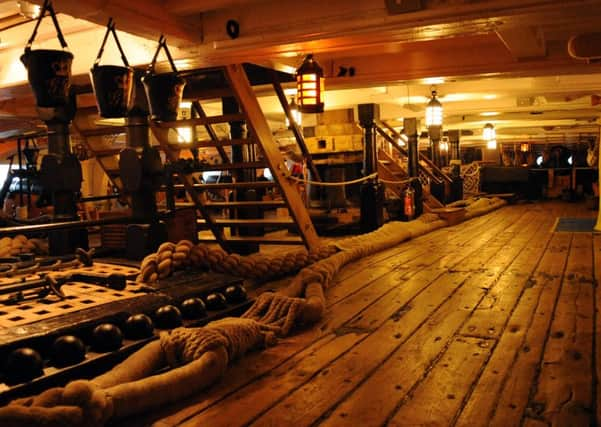John Cameron: Real victory for a great ship


Having auctioned thousands of very interesting medals, swords, guns, paintings and other related collectables over the years, it was a difficult question and it would be easy to think perhaps of the most expensive lot I’ve sold, which was the Peter Lionel Twiss collection of medals and ephemera for £50,000.
I am a romantic at heart and love items with provenance or an interesting story.
Advertisement
Hide AdAdvertisement
Hide AdIn fact, for me, the story is often better than the object.
About 15 years ago a client entered for auction a small oak wooden box dating to the late 18th century. The vendor had purchased the box from our auctions about 10 years prior when it had been catalogued with provenance ‘the former property of Lord Nelson’s secretary on board HMS Victory.’
Our records didn’t stretch back that far. However, one of the more senior auctioneers at the time remembered the box which had originally been entered for sale from the Royal Navy Trophy Store, who occasionally instructed our firm to dispose of surplus maritime silverware and plated items.
We made some provisional enquiries with the RN Trophy Store who were unable to substantiate the original provenance, but decided to catalogue it for our forthcoming sale with a footnote explaining the connection with Britain’s favourite naval hero.
Advertisement
Hide AdAdvertisement
Hide AdThe box itself was quite plain, about 1ft square with a hinged top and typical metalwork and lock of the period.
During the viewing of the sale I discussed the box with a number of our regular maritime dealers and collectors, though none of them seemed that interested. One reason for this is the amount of small wooden items that turn up at auction reputedly made from original oak from HMS Victory, in fact my senior colleague at the time used to joke that there must have been five HMS Victories if all of these carved oak items were genuinely made from the original timber of the ship.
On auction day when it was time for the lot to be sold, I happened to be on the rostrum.
I looked down at the sale-book to find no proxy bids had been registered and no telephone lines booked and, as this was before the days of live internet bidding, it was now down to interest in the room.
Advertisement
Hide AdAdvertisement
Hide AdThe bidding started off slowly, opening at £100 and going up in increments of £10 until it reached around £250, when the highest bidder was an eccentric-looking man wearing an 18th century-style sailor’s uniform with a plait in his hair tied in a bow. As this was also in the days before we introduced bidding numbers, I knocked down the hammer then politely asked the buyer’s name. The room fell silent when he replied ‘the buyer is HMS Victory’.
Though it hadn’t sold for a huge sum, it was the perfect outcome – the box would be returned to the historic ship and preserved for the nation, though I think some of the locals kicked themselves for not taking a gamble on the ‘loose’ provenance.